The OA is a show that makes me think a lot about the act of telling a story.
Storytelling takes two people: a teller and an audience. In that way, like with most interpersonal connections, it’s an act of trust. The amount of trust varies, but by putting some part of the exchange on somebody else, you are asking something of them you cannot be certain they’ll give. If this sounds like I’m overthinking or over-explaining social interactions, let me emphasize that most things require only the very smallest amount of trust, to the extent that we don’t even think of it as trust. I’m not trying to get you to rethink your whole life, I’m just trying to build to a point.
Most stories only ask for a little bit of trust. As a teller, you are trusting the audience to get invested in the story and care about it. And as an audience, you are trusting the teller to tell you a story you can invest in and care about. The amount of trust involved is based around how unusual the story is—how much the teller is asking the audience to think outside the box.
Brit Marling and Zal Batmanglij, creators of The OA, ask a lot of their audience, just as the titular heroine of the series asks a lot of the five people to whom she tells her story. Those five people are four ordinary teenage boys (Steve, French, Buck, and Jesse) and an ordinary teacher (Betty, or “BBA”) from their ordinary high school in a painfully ordinary suburban neighborhood called Crestwood. The ordinariness really is as important as anything else to the tale OA decides to tell them. The very first sentence of her story is “I was born in Russia in 1987,” and that alone prompts a disbelieving “What?” from belligerent misfit Steve Winchell.
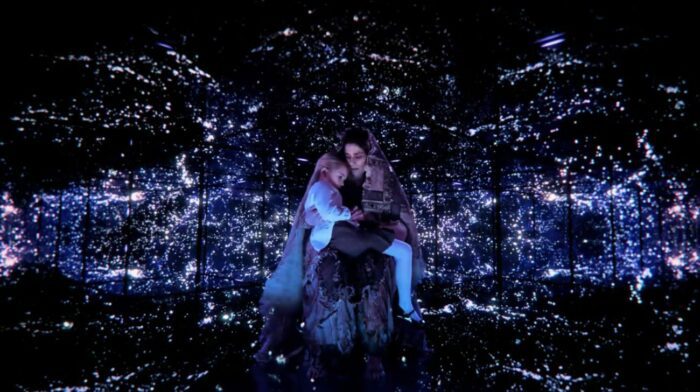
All throughout the first season, (labelled “Part I”) she takes them, and us, through a wild ride of a tale: from her early childhood as Nina Azarova, the daughter of a Russian oligarch; being blinded by a near-death experience (NDE), the disappearance and presumed death of her father and adoption by a humble American couple, who rename her Prairie Johnson; growing up with them in Michigan; leaving to find her birth father and winding up kidnapped by a scientist experimenting on NDE survivors and imprisoned underground for seven years, where further NDEs gave her insight into other dimensions and her new name, OA, which is so much that I start typing in run-on sentences—
…Ahem. It’s a lot.
The specific ways in which it is a lot differ somewhat between we, the real-life audience, and OA’s five new friends, dubbed by the fandom “the Crestwood Five”. They trust her to tell the truth, and she trusts them to believe her. Before anyone even shows up to hear her story, though, in an open invitation video, she asks whoever wants to show up to leave their front doors open when they leave. It’s not for her benefit, and she doesn’t know whether or not they’ve done it. It’s a matter of telling them where their headspace has to be in order to receive the story she has to give.
That said, these five characters don’t have the benefit of knowing they live in a TV show, so they’ve got a different point of view from the audience. They’re coming at this from the perspective of “Did all of this really happen? It sounds so outlandish!” and we’re coming at it from the perspective of “We know this didn’t really happen, but it still sounds so outlandish!”
We’re used to science-fiction and fantasy stories, but in The OA, the mish-mash of so many different elements from so many different kinds of stories all rolled up into one hard-to-quantify package leaves us uncertain of what to expect next. Girl was blind and then she got kidnapped for seven years and now she can see? Perfectly solid hook. Near-death experiences lead to contact with other dimensions? A little weirder, a little further into sci-fi, but that’s fine. A being from another dimension gives our heroes the power to do magic via interpretive dance? Yeah, now you’re gonna lose people.
This dancing, a specific choreography referred to as the five movements, is one of the bigger points of contention among viewers. It is framed as a means of channeling one’s willpower into energy, and it is used at one point in the show to bring a dead man back to life, and at other points to travel in between parallel dimensions. All five movements together look like this. I think it’s badass, and I’ve been learning how to do them, but that’s not the point right now.
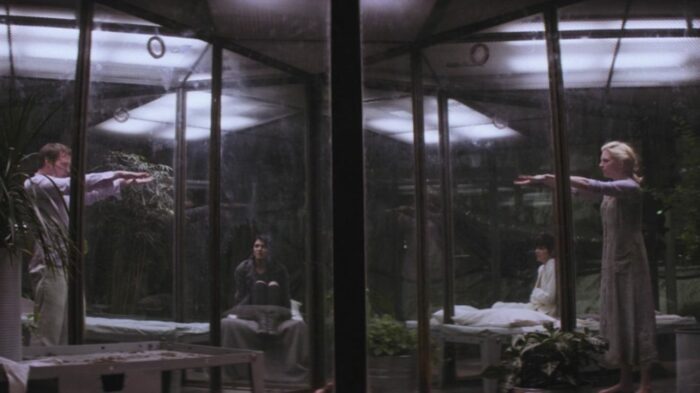
One of the things I especially love about The OA is that it never apologizes for its weirdness. It isn’t so insecure that you’ll stop watching that it trips over itself to say, “Yeah, we know this is silly,” it just does what it wants to do. A certain amount of self-aware humor is all well and good but I admire something that has the guts to be completely earnest about its identity, especially if that identity doesn’t fit into an easy genre classification or archetype. The OA doesn’t care how many people think it’s silly, (and plenty of the critics who wrote reviews of it used that very word) because it’s not desperate for anyone’s approval, it’s here to connect with whoever’s ready to connect with it.
Of course, “asking for trust” in the context of storytelling doesn’t just mean “asking the audience not to think your out-there sci-fi concepts are too weird to take the story seriously,” it comes in plenty of little ways. For me, there were a number of more mundane storytelling choices—the kind of things that are not unique to weird sci-fi/fantasy yarns—that gave me pause, which I had to trust would be contextualized or justified later, and which were.
I was a little apprehensive about our heroine’s dismissive attitude towards her parents—her adopted parents, that is, the sweet and unassuming Nancy and Abel Johnson. They’ve lived seven years not knowing whether their daughter was dead or alive, but OA is so concerned with her own perspective that she neglects to tell her parents about any of what happened to her. It bothered me, and the show made me wait until the end of the first season to reward me for my patience, but reward me it did, when French calls OA out (gently) on the subject, and OA finally understands their need, and talks to them about what happened to her.
I was also a little apprehensive about the amount of sympathy extended to aforementioned belligerent misfit Steve Winchell, given that one of the first things we see him do is break another kid’s nose out of petty jealousy. But by the end of Part I, Steve is my precious baby who must be protected at all costs—or, to put it more intellectually, I’ve come to understand that he’s hurting and he needs to be helped. And while he certainly isn’t owed sympathy by the people he has hurt, someone (OA, the rest of the Crestwood gang, the audience) has to extend it to him, because that’s what community is about.
The most (in)famous leap the show asks us to take with it is the climax of Part I, in which a faceless man with no lines and no prior introduction to the story comes into the high school and terrorizes the students with an automatic weapon. (The randomness of it turned some people off, but I found it to be a legitimate observation about the common and seemingly arbitrary nature of real mass shootings.) In a moment of desperation, the Crestwood Five put their doubts in the OA aside, they perform the five movements with perfect feeling, and the shooter freezes in place, until a member of the kitchen staff is able to tackle him to the ground.
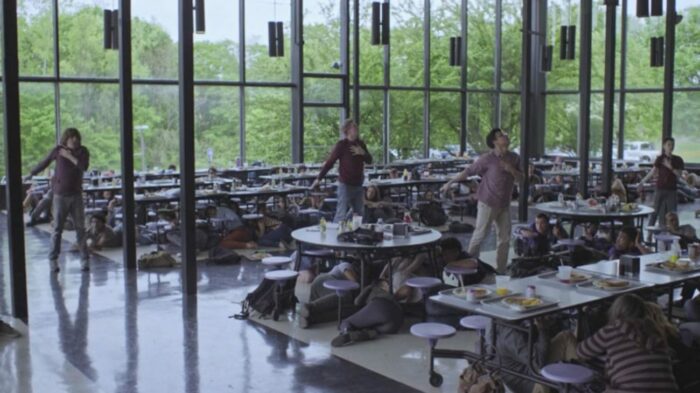
The epidemic of school shootings is the stuff of my nightmares as well, so I certainly understand those who found the depiction here in a fantastical context kind of tasteless. I understand that, really. Something this audacious acts as a kind of test, to see whether you’re in or out, and after the amazing journey that Part I took me on, I was all in.
Honestly, the dancing thing grew to become one of my favorite things about the show the longer I lived with it. The characters don’t spend too much time discussing the idea of movement as a means of channeling unknown energies—or at least not in any pithy or quotable manner. That said, I always associate its use here with its use Luca Guadagnino’s 2018 not-remake of Suspiria, which does have an excellent quote regarding dance-as-magic: Madame Blanc says, “Movement is never mute. It is a language. It’s a series of energetic shapes written in the air like words forming sentence. Like poems. Like prayers,” and Susie Bannon follows up, “Like spells?”
As the show moves into Part II, it gets away from the concept of storytelling as an act of trust, at least in the context of the narrative itself. Still, I notice that in the first episode, Fola has this to say to Karim in regards to the Q Symphony puzzle that she’s trying to solve: “It’s not a game. It’s a puzzle. A game is one side against another. There’s a winner, and a loser. Puzzles don’t have losers. […] The designer wants the player to figure it out.” Like with storytelling, it’s a kind of collaboration. The series does not follow this train of logic to draw a parallel between puzzles and stories, but I sure did!
Part II does continue its metafictional pattern of asking a lot from the audience by pushing the boundaries of our expectations. Our limited understanding of the fantastical multiple-dimension cosmology becomes both clearer and vaguer with each new development, raising as many questions as it answers, and offering endless fodder for interpretation and speculation. With the show’s grounded, humanistic side established in Part I, the writers allowed themselves to lean even further into the metaphysical puzzle inside the story for Part II, in a way that captivated the fanbase, and would’ve been mostly wasted on those who couldn’t get through Part I.
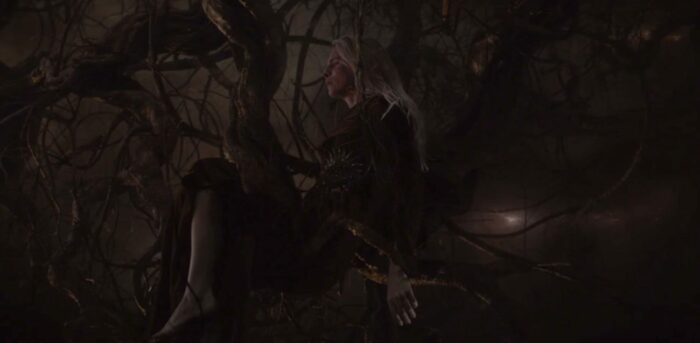
The final episode takes the biggest swing, the biggest “Are you still with us?” moment of them all: it gets extremely meta. Dr. Hap and OA make a jump into another dimension, and are suddenly inhabiting the bodies of their actors, Jason Isaacs and Brit Marling, on the set of their TV series. We’re given enough information to know that it is still a fictionalized version of reality—most significantly, Isaacs and Marling are married here, and not in real life. But beyond that, we’re thrown for a huge loop, and left not knowing what to expect anymore.
Would Marling and Batmanglij been able to justify such an extreme twist? Maybe, maybe not. Unfortunately, we’ll probably never know. Netflix cancelled The OA a few months after the release of Part II, so that ballsy cliffhanger is what we’re left with, through no decision of ourselves or the creators.
Sadly, when it comes to stories like The OA—when it comes to most fiction in the 21st century—there are more parties involved than the storyteller and the audience. There is also the financier and the distributor, who in this case are one and the same. For a long time, patronage has been its own relationship of trust between the patron and artist, but of course, a company like Netflix is not a patron, and when they decide a project is no longer financially viable, they cancel it. There is no real trust involved for them; they do not ask, they demand. And the rest of us have to live with the disappointment of a story cut short.
This is how the art world works, though, and it’s a possibility both the creators and fans of The OA were aware of when we started. Perhaps there is a lesson to be found in here, too: that even if things don’t turn out all right, even if the trust is broken by the audience, the artist, or sabotaged by an interloping third party, it’s still worth trying. In any other kind of exchange, any kind of relationship, trust gives people the power to do good for us as much as to hurt us. It’s all part of being a member of a larger community. Just speaking personally, it was worth getting invested in The OA, even if I wound up heartbroken, because of how happy it made me.
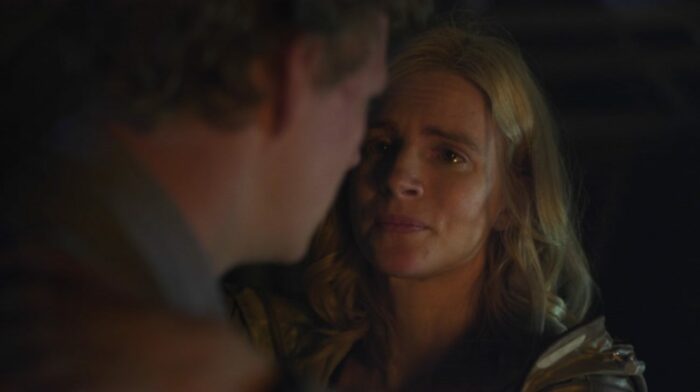
It was worth it for the OA. She trusted Hap, and he betrayed her. She also trusted her fellow captives, the Crestwood Five, Karim, her alternate-universe self, and those relationships made it worth it for her. She didn’t let Hap’s betrayal destroy her capacity for trust, because then she’d be like him: she’d have nobody. And as she tells Steve when he’s at his lowest point, when he’s hurt her, but also when he needs help the most, “I survived because I wasn’t alone.”


Just finished OA then read your review. I think you got it, you explained well and I agree with all your points and observations. Thanks for putting in to words so eloquently what I felt and spoilers aside (didn’t affect me) I hope many others reading it decide to watch the show. We can all hope for more, you never know, if it gains enough momentum I’m certain the bean counters will suddenly be all over it. Best series I’ve seen in ages.